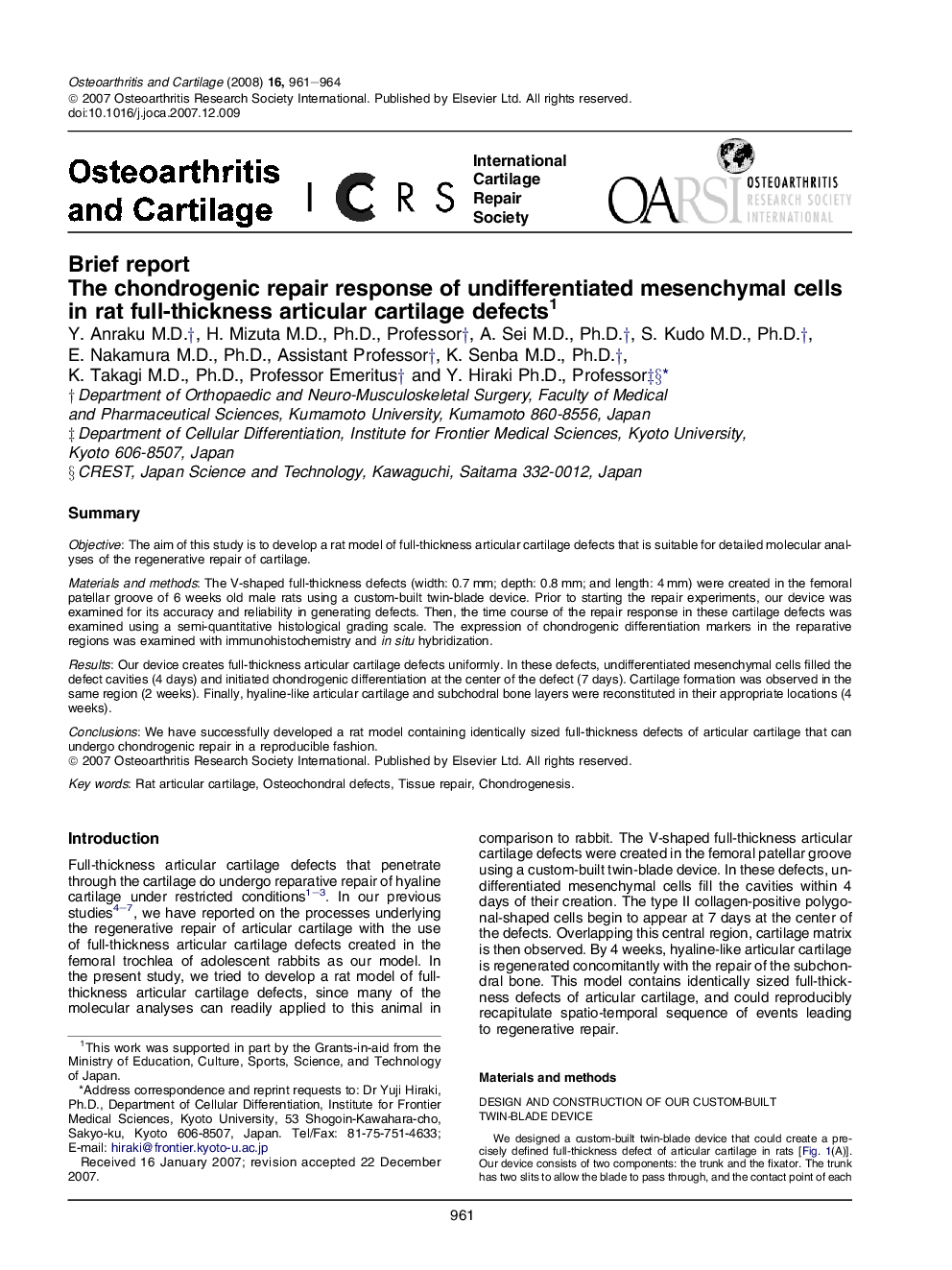| کد مقاله | کد نشریه | سال انتشار | مقاله انگلیسی | نسخه تمام متن |
|---|---|---|---|---|
| 3381450 | 1220255 | 2008 | 4 صفحه PDF | دانلود رایگان |

SummaryObjectiveThe aim of this study is to develop a rat model of full-thickness articular cartilage defects that is suitable for detailed molecular analyses of the regenerative repair of cartilage.Materials and methodsThe V-shaped full-thickness defects (width: 0.7 mm; depth: 0.8 mm; and length: 4 mm) were created in the femoral patellar groove of 6 weeks old male rats using a custom-built twin-blade device. Prior to starting the repair experiments, our device was examined for its accuracy and reliability in generating defects. Then, the time course of the repair response in these cartilage defects was examined using a semi-quantitative histological grading scale. The expression of chondrogenic differentiation markers in the reparative regions was examined with immunohistochemistry and in situ hybridization.ResultsOur device creates full-thickness articular cartilage defects uniformly. In these defects, undifferentiated mesenchymal cells filled the defect cavities (4 days) and initiated chondrogenic differentiation at the center of the defect (7 days). Cartilage formation was observed in the same region (2 weeks). Finally, hyaline-like articular cartilage and subchodral bone layers were reconstituted in their appropriate locations (4 weeks).ConclusionsWe have successfully developed a rat model containing identically sized full-thickness defects of articular cartilage that can undergo chondrogenic repair in a reproducible fashion.
Journal: Osteoarthritis and Cartilage - Volume 16, Issue 8, August 2008, Pages 961–964